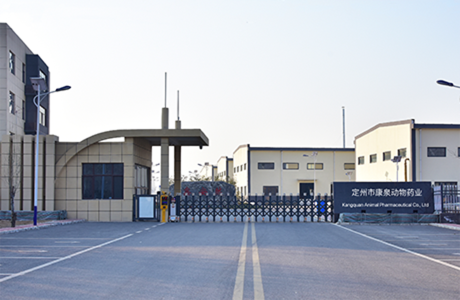- Afrikaans
- Albanian
- Amharic
- Arabic
- Armenian
- Azerbaijani
- Basque
- Belarusian
- Bengali
- Bosnian
- Bulgarian
- Catalan
- Cebuano
- Corsican
- Croatian
- Czech
- Danish
- Dutch
- English
- Esperanto
- Estonian
- Finnish
- French
- Frisian
- Galician
- Georgian
- German
- Greek
- Gujarati
- Haitian Creole
- hausa
- hawaiian
- Hebrew
- Hindi
- Miao
- Hungarian
- Icelandic
- igbo
- Indonesian
- irish
- Italian
- Japanese
- Javanese
- Kannada
- kazakh
- Khmer
- Rwandese
- Korean
- Kurdish
- Kyrgyz
- Lao
- Latin
- Latvian
- Lithuanian
- Luxembourgish
- Macedonian
- Malgashi
- Malay
- Malayalam
- Maltese
- Maori
- Marathi
- Mongolian
- Myanmar
- Nepali
- Norwegian
- Norwegian
- Occitan
- Pashto
- Persian
- Polish
- Portuguese
- Punjabi
- Romanian
- Russian
- Samoan
- Scottish Gaelic
- Serbian
- Sesotho
- Shona
- Sindhi
- Sinhala
- Slovak
- Slovenian
- Somali
- Spanish
- Sundanese
- Swahili
- Swedish
- Tagalog
- Tajik
- Tamil
- Tatar
- Telugu
- Thai
- Turkish
- Turkmen
- Ukrainian
- Urdu
- Uighur
- Uzbek
- Vietnamese
- Welsh
- Bantu
- Yiddish
- Yoruba
- Zulu
Dec . 06, 2024 14:32 Back to list
Effective Medications for Treating Giardia Infection in Patients
Medication for Treating Giardia Understanding the Options
Giardiasis is an intestinal infection caused by the parasite Giardia lamblia, affecting millions of people worldwide. This condition often leads to symptoms such as diarrhea, abdominal cramps, bloating, nausea, and fatigue. While mild cases of giardiasis may resolve on their own, moderate to severe infections often require medical intervention, typically involving specific medications to combat the parasite effectively. In this article, we will explore the primary medications used to treat giardiasis, their mechanisms of action, and considerations for their use.
Common Medications for Giardiasis
1. Metronidazole (Flagyl)
Metronidazole is one of the most commonly prescribed medications for treating giardiasis. It belongs to a class of drugs known as nitroimidazoles. The drug works by entering the cells of the Giardia parasite and causing damage to their DNA, effectively killing the organism. Metronidazole is generally administered for five to seven days, with a typical dosage being 250 mg taken three times a day for adults.
While metronidazole is effective, it is not without side effects. Patients may experience nausea, headache, and a metallic taste in the mouth. Additionally, alcohol consumption should be avoided during treatment and for at least 48 hours after completing the course, as it can lead to severe reactions like flushing, nausea, and vomiting.
2. Tinidazole (Tindamax)
Tinidazole is another effective treatment option for giardiasis, also belonging to the nitroimidazole drug class. Similar to metronidazole, tinidazole works by disrupting the DNA of Giardia. Its key advantage is that it can be administered in a single dose, making it a more convenient option for many patients.
The usual dose for adults is 2 grams taken orally as a single dose. While it generally has fewer side effects than metronidazole, some patients may still experience gastrointestinal upset, dizziness, or a metallic taste.
what medication is used to treat giardia

3. Nitazoxanide (Alinia)
Nitazoxanide is a newer medication that has shown efficacy against Giardia as well as other protozoan infections. Unlike metronidazole and tinidazole, which primarily focus on disrupting the parasite's DNA, nitazoxanide works by inhibiting a crucial enzyme necessary for the energy metabolism of the parasite. This dual action makes nitazoxanide a compelling option.
For adults and children over 12 years, the typical dosing is 500 mg twice daily for three days
. Nitazoxanide may have fewer side effects compared to other treatments, but some patients report experiencing mild diarrhea and abdominal pain.Considerations for Treatment
While the aforementioned medications are effective, the choice of treatment may depend on various factors, including the severity of the infection, patient health history, and potential drug interactions. Pregnant or breastfeeding women, as well as individuals with pre-existing health conditions, should consult healthcare providers for tailored treatment options.
Moreover, it’s essential to diagnose giardiasis accurately, as symptoms can mimic other gastrointestinal disorders. Laboratory tests, such as stool examinations, are often performed to confirm the presence of Giardia.
Conclusion
Giardiasis is a treatable condition, and several effective medications are available to eradicate the Giardia lamblia parasite. Metronidazole, tinidazole, and nitazoxanide are the primary options, each with its own benefits and considerations for use. If you suspect a Giardia infection, it’s crucial to seek medical advice to ensure proper diagnosis and treatment, allowing for a swift recovery and relief from symptoms.
-
Guide to Oxytetracycline Injection
NewsMar.27,2025
-
Guide to Colistin Sulphate
NewsMar.27,2025
-
Gentamicin Sulfate: Uses, Price, And Key Information
NewsMar.27,2025
-
Enrofloxacin Injection: Uses, Price, And Supplier Information
NewsMar.27,2025
-
Dexamethasone Sodium Phosphate Injection: Uses, Price, And Key Information
NewsMar.27,2025
-
Albendazole Tablet: Uses, Dosage, Cost, And Key Information
NewsMar.27,2025













